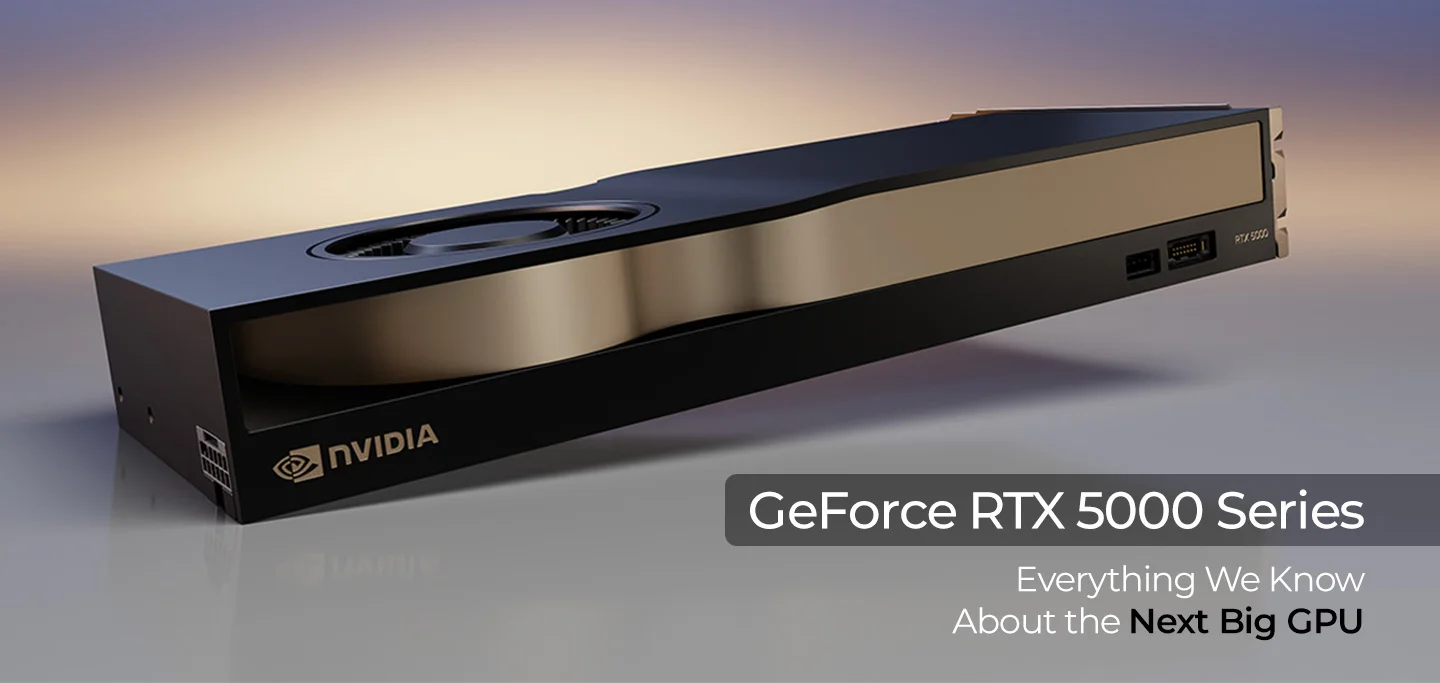For Professionals, By Professionals

Discover ProX PC for best custom-built PCs, powerful workstations, and GPU servers in India. Perfect for creators, professionals, and businesses. Shop now!
SERVICES
WE ACCEPT










NVIDIA, one of the leading companies in the field, has always been at the forefront of innovation. Their next big release, the NVIDIA RTX 5000, has generated immense excitement and speculation. In this article, we will dive into everything we know so far about the RTX 5000, including its specifications, features, performance, and release date. Let’s explore why this GPU is considered a game-changer.
NVIDIA RTX 5000: A New Era for GPUs
The NVIDIA RTX 5000 is part of NVIDIA’s next-generation GPU lineup. It is expected to bring significant improvements in performance, efficiency, and features compared to its predecessors. The RTX 5000 is designed for high-end gaming, professional visualization, and AI applications. It promises to redefine what users can achieve with a single GPU.
Although NVIDIA has not officially confirmed the full specifications of the RTX 5000, several leaks and industry rumors provide a glimpse into its capabilities. Here are some of the expected specifications:
Architecture: Built on NVIDIA’s new Ada Lovelace-Next architecture, the RTX 5000 will leverage advanced fabrication technology.
CUDA Cores: Expected to have over 18,000 CUDA cores, offering unmatched parallel processing power.
VRAM: The RTX 5000 could feature up to 24 GB of GDDR7 memory, ensuring fast data transfer rates and smooth performance.
Ray Tracing Cores: Enhanced ray tracing cores will provide more realistic lighting and shadow effects in real time.
Tensor Cores: Next-gen Tensor Cores will improve AI-based features, including DLSS (Deep Learning Super Sampling).
Power Efficiency: The GPU is expected to deliver better performance per watt, making it both powerful and energy-efficient.
The NVIDIA RTX 5000 is packed with cutting-edge features that set it apart from previous models. These features make it a versatile choice for gamers, creators, and AI enthusiasts alike. Let’s look at some of the highlights:
The RTX 5000 is likely to include DLSS 4.0, an advanced AI-based upscaling technology. This feature allows users to enjoy higher resolutions and smoother frame rates without compromising on performance.
With improved ray tracing cores, the RTX 5000 will deliver stunning visuals. Real-time ray tracing enhances the realism of games and simulations by accurately simulating light behavior.
The GPU will integrate advanced AI features to optimize performance and enhance workflows. These include tools for video editing, 3D rendering, and AI model training.
For professionals working on demanding projects, the RTX 5000 may support multi-GPU configurations. This feature is ideal for industries like film production, architectural visualization, and AI research.
The RTX 5000 is expected to support PCIe 5.0, ensuring faster data transfer between the GPU and other components.
To handle its immense power, the RTX 5000 will likely feature advanced cooling solutions. These will ensure optimal performance even during intensive tasks.
Early benchmarks suggest that the NVIDIA RTX 5000 will outperform the RTX 4000 series by a significant margin. In gaming, it is expected to deliver over 100 FPS in 4K resolution for most AAA titles. For creators, rendering times could be cut in half compared to previous-generation GPUs. AI applications will benefit from faster model training and real-time inference capabilities.
The RTX 5000 caters to a diverse range of users. Let’s identify the key segments:
Hardcore gamers will appreciate the RTX 5000’s ability to run games at ultra settings with ray tracing enabled. It will also support VR gaming, offering a highly immersive experience.
For video editors, 3D artists, and designers, the RTX 5000 will provide the performance needed to handle complex projects. Its AI-powered tools will streamline workflows and enhance productivity.
The RTX 5000’s advanced Tensor Cores make it an excellent choice for AI workloads. From model training to deployment, this GPU will handle tasks efficiently.
Architects, engineers, and film professionals will benefit from the RTX 5000’s high-performance rendering and simulation capabilities.
NVIDIA has not officially announced the release date for the NVIDIA RTX 5000 Expected: January 7-10, 2025, likely to be priced between $1,500 and $2,000. While it may seem expensive, the performance gains and features justify the investment for professionals and enthusiasts.
The RTX 5000 is a significant upgrade over its predecessors. Here is a quick comparison:
| Feature | RTX 4000 Series | RTX 5000 (Expected) |
| Architecture | Ada Lovelace | Ada Lovelace-Next |
| CUDA Cores | Up to 16,000 | Over 18,000 |
| VRAM | Up to 20 GB GDDR6X | Up to 24 GB GDDR7 |
| Ray Tracing Cores | 3rd Generation | 4th Generation |
| Tensor Cores | Improved AI Features | Next-Gen AI Features |
| PCIe Support | PCIe 4.0 | PCIe 5.0 |
The release of the NVIDIA RTX 5000 will not be without challenges. Competing companies like AMD and Intel are also pushing the boundaries of GPU technology. AMD’s RDNA 4 architecture and Intel’s Arc series GPUs are expected to provide stiff competition. Additionally, global semiconductor shortages could impact availability.
NVIDIA is focusing on sustainability with the RTX 5000. The GPU’s power efficiency and advanced manufacturing processes will reduce its carbon footprint. This aligns with NVIDIA’s commitment to environmentally friendly technology.
The NVIDIA RTX 5000 is shaping up to be a revolutionary GPU. With cutting-edge technology, unmatched performance, and a focus on versatility, it is poised to become the go-to choice for gamers, creators, and professionals. Whether you are a gamer seeking immersive experiences, a creator working on complex projects, or an AI researcher looking for efficiency, the RTX 5000 has something to offer.
Stay tuned for official announcements from NVIDIA as we get closer to the release date. The future of GPUs is exciting, and the RTX 5000 is leading the charge. Keep an eye out for more updates, and get ready to experience the next big leap in GPU technology.
Share this: